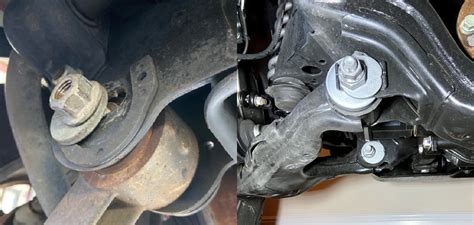The Fastest Way to Adjust Camber: No Camber Bolts
Achieving optimal camber is crucial for handling, tire wear, and overall vehicle performance. While camber bolts offer one solution, they're not always the fastest or most effective method. This article explores the quickest ways to adjust camber without relying on camber bolts, focusing on professional-grade solutions and their benefits. We'll also address common questions surrounding alternative camber adjustment techniques.
What is Camber and Why Does it Matter?
Before diving into adjustment methods, let's briefly define camber. Camber refers to the angle of your wheels relative to the vertical axis when viewed from the front or rear of the vehicle. Positive camber means the top of the wheel leans outward, while negative camber means the top leans inward. Proper camber settings are vital because they impact:
- Tire Wear: Incorrect camber leads to uneven tire wear, reducing lifespan and potentially causing dangerous handling characteristics.
- Handling and Performance: Optimal camber improves grip, cornering stability, and overall vehicle responsiveness.
- Vehicle Stability: Precise camber settings contribute to a more stable and predictable driving experience.
The Fastest Way to Adjust Camber Without Camber Bolts: Suspension Modifications
The most effective (and often fastest, depending on your mechanical skills) way to adjust camber without camber bolts involves modifications to the suspension itself. This usually entails:
- Adjustable Suspension Components: Upgrading to a fully adjustable coilover suspension system allows for precise camber adjustments via threaded sleeves or other adjustable components. This offers a wide range of adjustment and is the preferred method for serious performance enthusiasts.
- Aftermarket Control Arms: Replacing stock control arms with adjustable aftermarket counterparts provides another route to fine-tune camber. These arms typically incorporate adjustable ball joint mounting points or eccentric bushings for camber adjustment.
Advantages of Adjustable Suspension Components & Aftermarket Control Arms:
- Precision: These methods offer far greater precision than camber bolts, allowing for minute adjustments to dial in the perfect camber angle.
- Durability: High-quality adjustable components are built to withstand significant stress and provide long-lasting performance.
- Improved Handling: Beyond camber, these upgrades often improve overall suspension performance, leading to a more refined and responsive driving experience.
- Larger Adjustment Range: They typically offer a much wider range of adjustment compared to camber bolts.
Other Methods (Less Efficient for Speed)
While adjustable suspension and control arms are the fastest and most accurate for significant camber adjustments, other methods exist, though they are generally less efficient for speed:
-
Shimming: Adding shims between suspension components can alter camber, but this is a less precise method and may require iterative adjustments. It's also prone to issues with component wear and potential damage if done incorrectly.
-
Professional Alignment Shop: This is not a DIY method, but it's crucial to mention. A professional alignment shop possesses the specialized equipment and expertise to make accurate camber adjustments, even with limitations on your vehicle's design. They may utilize shims or other techniques, but their precise measurements and experience usually make this a better option than DIY.
Frequently Asked Questions (FAQ)
How much does it cost to adjust camber?
The cost varies significantly based on the method. Camber bolts are the most affordable option, but professional adjustment with new suspension components can be quite expensive.
Can I adjust camber myself?
Yes, you can adjust camber yourself with camber bolts, but more significant adjustments (using adjustable suspension components or control arms) usually require mechanical expertise and specialized tools. Improper adjustment can negatively impact safety and vehicle performance.
How often should I check my camber?
It's advisable to have your camber checked as part of routine wheel alignments, especially after any suspension work or impacts.
What are the signs of incorrect camber?
Uneven tire wear (more wear on one side of the tire), pulling to one side during driving, and reduced handling responsiveness are common signs of incorrect camber.
Disclaimer: Modifying your vehicle's suspension can be complex and potentially dangerous if not done correctly. Always consult with a qualified mechanic or professional before undertaking any suspension modifications. Improper adjustments can lead to unsafe driving conditions and damage your vehicle. This information is for educational purposes only and should not be considered professional advice.

